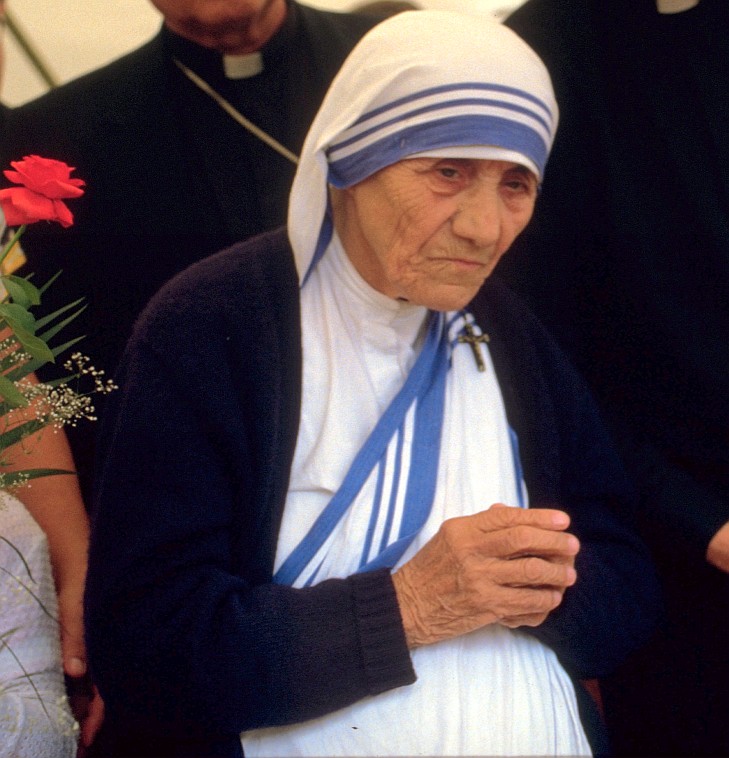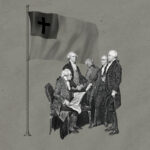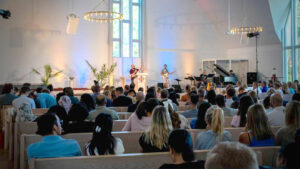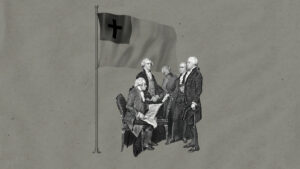On Sunday, at a Roman Catholic canonization service in Vatican City, Pope Francis will declare Mother Teresa a saint.* Here are nine things you should know about the Nobel-prize-winning nun who became renowned for serving the poor and dying:

1. Mother Teresa was born Anjezë Gonxhe Bojaxhiu in 1910 in what is now part of modern Macedonia. At the age of 18 she left home to join the Sisters of Loreto, a group of nuns in Ireland. It was there she took the name Sister Mary Teresa after Saint Thérèse of Lisieux. A year later, in 1929, Mother Teresa moved to India and taught at a Catholic school for girls.
2. In 1946 Mother Teresa received what she would later describe as a “call within a call.” She said Jesus spoke to her and told her to abandon teaching to work in the slums of Calcutta aiding the city's poorest and sickest people. In 1950 she received Vatican approval for Missionaries of Charity, a group of religious sisters who took vows of chastity, poverty, obedience, and to give “wholehearted free service to the poorest of the poor.” By the late 1970s, the Missionaries of the Charity had offshoots in Asia, Africa, Europe, and the United States.
3. Mother Teresa and her religious order gained international attention in 1967 when the famed journalist Malcolm Muggeridge interviewed her for a BBC TV program. Because of the popularity of the interview, Muggeridge traveled to Calcutta a year later to make a documentary, Something Beautiful for God, about Theresa's “House of the Dying” (Muggeridge would also write a book by the same name in 1971).
4. During her life Mother Teresa received more 120 prestigious awards and honors. In 1971, Paul VI conferred the first Pope John XXIII Peace Prize on Mother Teresa, and in 1979 she won the Nobel Peace Prize. The Norwegian Nobel Committee writes in their motivation: “In making the award the Norwegian Nobel Committee has expressed its recognition of Mother Teresa's work in bringing help to suffering humanity. This year the world has turned its attention to the plight of children and refugees, and these are precisely the categories for whom Mother Teresa has for many years worked so selflessly.” She also received the highest U.S. civilian award, the Presidential Medal of Freedom, in 1985.
5. During her 1979 Nobel Prize Lecture, Mother Teresa called abortion the “greatest destroyer of peace”:
We are talking of peace. These are things that break peace, but I feel the greatest destroyer of peace today is abortion, because it is a direct war, a direct killing—direct murder by the mother herself. And we read in the Scripture, for God says very clearly: Even if a mother could forget her child—I will not forget you—I have carved you in the palm of my hand. We are carved in the palm of his hand, so close to him that unborn child has been carved in the hand of God. And that is what strikes me most, the beginning of that sentence, that even if a mother could forget something impossible—but even if she could forget—I will not forget you. And today the greatest means—the greatest destroyer of peace is abortion. And we who are standing here—our parents wanted us. We would not be here if our parents would do that to us. Our children, we want them, we love them, but what of the millions. Many people are very, very concerned with the children in India, with the children in Africa where quite a number die, maybe of malnutrition, of hunger and so on, but millions are dying deliberately by the will of the mother. And this is what is the greatest destroyer of peace today. Because if a mother can kill her own child—what is left for me to kill you and you kill me—there is nothing between.
6. Mother Teresa was frequently denounced by secularists because of her opposition to contraception and abortion. But she was also widely criticized for allowing her charity to provide inadequate care for the poor and for potential mismanagement of charitable funds. Although she leveraged her fame to raise tens of millions of dollars for her charity, the orphanages and care centers run by her religious order were often substandard. After visiting Mother Teresa’s Home for the Dying in 1994, Robin Fox wrote about the experience in the British medical journal, The Lancet. Fox reported that doctors only occasionally visited the patients (the care was mostly provided by untrained volunteers) and that pain relief provided for the dying was inadequate, leading them to suffer unnecessarily. In 2008, another observer reported, “I was shocked to see the negligence. Needles were washed in cold water and reused and expired medicines were given to the inmates. There were people who had chance to live if given proper care.”
7. Mother Teresa has also been criticized by Christians for downplaying evangelism and espousing universalist views of salvation. For example in her book, Life in the Spirit: Reflections, Meditations and Prayers, she says:
Our purpose is to take God and his love to the poorest of the poor, irrespective of their ethnic origin or the faith they profess. Our discernment of aid is not the belief but the necessity. We never try to convert those whom we receive to Christianity but in our work we bear witness to the love of God’s presence and if Catholics, Protestants, Buddhists, or agnostics become for this better men—simply better—we will be satisfied. It matters to the individual what church he belongs to. If that individual thinks and believes that this is the only way to God for her or him, this is the way God comes into their life—his life. If he does not know any other way and if he has no doubt so that he does not need to search then this is his way to salvation.
When a Catholic priest asked if she attempted to convert people, she reportedly answered, “Yes, I convert. I convert you to be a better Hindu, or a better Muslim, or a better Protestant, or a better Catholic, or a better Parsee, or a better Sikh, or a better Buddhist. And after you have found God, it is for you to do what God wants you to do.’ ”
8. After her death, Mother Teresa’s letters revealed that she spent almost 50 years in a crisis of faith, sometimes doubting the existence of God and frequently feeling his absence in her life. The absence began to be felt around 1948, soon after she began serving the poor in Calcutta, and would last until her death in 1997. As David Van Biema wrote in Time magazine:
In more than 40 communications, many of which have never before been published, she bemoans the “dryness,” “darkness,” “loneliness,” and “torture” she is undergoing. She compares the experience to hell and at one point says it has driven her to doubt the existence of heaven and even of God. She is acutely aware of the discrepancy between her inner state and her public demeanor. “The smile,” she writes, is “a mask” or “a cloak that covers everything.” Similarly, she wonders whether she is engaged in verbal deception. “I spoke as if my very heart was in love with God–tender, personal love,” she remarks to an adviser. “If you were [there], you would have said, ‘What hypocrisy.'”
9. For Mother Teresa to be recognized as a saint within the Catholic Church, she had to undergo the lengthy process of beatification and canonization. The process usually cannot be started until five years after the person has died, but Mother Teresa received a waiver from Pope John Paul II. Before beatification (which recognizes the person’s ability to intercede to God on behalf of individuals who pray in his or her name) a person must have a verified miracle attributed to them after their death. After beatification the church looks for a second miracle before proceeding to canonization. If one is found and they meet the other criteria, the pope can conduct a special Mass at which the person is recognized a saint. The first miracle attributed to Mother Teresa involved the healing of an Indian woman, Monica Besra, whose abdominal tumor was so severe that her doctors abandoned hope of saving her. After a Miraculous Medal that had been touched to the body of Mother Teresa was placed on Besra’s stomach, the tumor reportedly disappeared. The second miracle involved a Brazilian man who reportedly was healed of a bacterial infection in the brain after he and his family prayed to Mother Teresa for her help.
*Why is an evangelical site like TGC writing about a person who held religious views that we find irreconcilable with the gospel? There are two main reasons why I think evangelicals should know something about Mother Teresa: First, she remains a popular historical figure. During her life, she was named 18 times in the yearly Gallup's most admired man and woman poll as one of the 10 women around the world who Americans admired most, finishing first several times in the 1980s and 1990s. Also, in 1999, a poll of Americans ranked her first in Gallup's List of Most Widely Admired People of the 20th Century. Second, for many people Mother Teresa’s name has become synonymous with Christian charity. For these reasons we should know something about this nun from Calcutta. While we ought to recognize Mother Teresa as a laudable champion against abortion who had a fervent concern for the poor, we should also be aware of her many foibles and failings so that we can correct the perception of her as an uncriticizable Christian leader.
Other articles in this series:
The Opioid Epidemic • The Olympic Games • Physician-Assisted Suicide • Nuclear Weapons • China’s Cultural Revolution • Jehovah’s Witnesses • Harriet Tubman • Autism • Seventh-day Adventism • Justice Antonin Scalia (1936–2016) • Female Genital Mutilation • Orphans • Pastors • Global Persecution of Christians (2015 Edition) • Global Hunger • National Hispanic Heritage Month • Pope Francis • Refugees in America • Margaret Sanger • Confederate Flag Controversy • Elisabeth Elliot • Animal Fighting • Mental Health • Prayer in the Bible • Same-sex Marriage • Genocide • Church Architecture • Auschwitz and Nazi Extermination Camps • Boko Haram • Adoption • Military Chaplains • Atheism • Intimate Partner Violence • Rabbinic Judaism • Hamas • Male Body Image Issues • Mormonism • Islam • Independence Day and the Declaration of Independence • Anglicanism • Transgenderism • Southern Baptist Convention • Surrogacy • John Calvin • The Rwandan Genocide • The Chronicles of Narnia • The Story of Noah • Fred Phelps and Westboro Baptist Church • Pimps and Sex Traffickers • Marriage in America • Black History Month • The Holocaust • Roe v. Wade • Poverty in America • Christmas • The Hobbit • Council of Trent • C.S. Lewis • Halloween and Reformation Day • Casinos and Gambling • Prison Rape • 6th Street Baptist Church Bombing • 9/11 Attack Aftermath • Chemical Weapons • March on Washington • Duck Dynasty • Child Brides • Human Trafficking • Scopes Monkey Trial • Social Media • Supreme Court's Same-Sex Marriage Cases • The Bible • Human Cloning • Pornography and the Brain • Planned Parenthood • Boston Marathon Bombing • Female Body Image Issues • Islamic State
Download your free Christmas playlist by TGC editor Brett McCracken!
 It’s that time of year, when the world falls in love—with Christmas music! If you’re ready to immerse yourself in the sounds of the season, we’ve got a brand-new playlist for you. The Gospel Coalition’s free 2025 Christmas playlist is full of joyful, festive, and nostalgic songs to help you celebrate the sweetness of this sacred season.
It’s that time of year, when the world falls in love—with Christmas music! If you’re ready to immerse yourself in the sounds of the season, we’ve got a brand-new playlist for you. The Gospel Coalition’s free 2025 Christmas playlist is full of joyful, festive, and nostalgic songs to help you celebrate the sweetness of this sacred season.
The 75 songs on this playlist are all recordings from at least 20 years ago—most of them from further back in the 1950s and 1960s. Each song has been thoughtfully selected by TGC Arts & Culture Editor Brett McCracken to cultivate a fun but meaningful mix of vintage Christmas vibes.
To start listening to this free resource, simply click below to receive your link to the private playlist on Spotify or Apple Music.


































